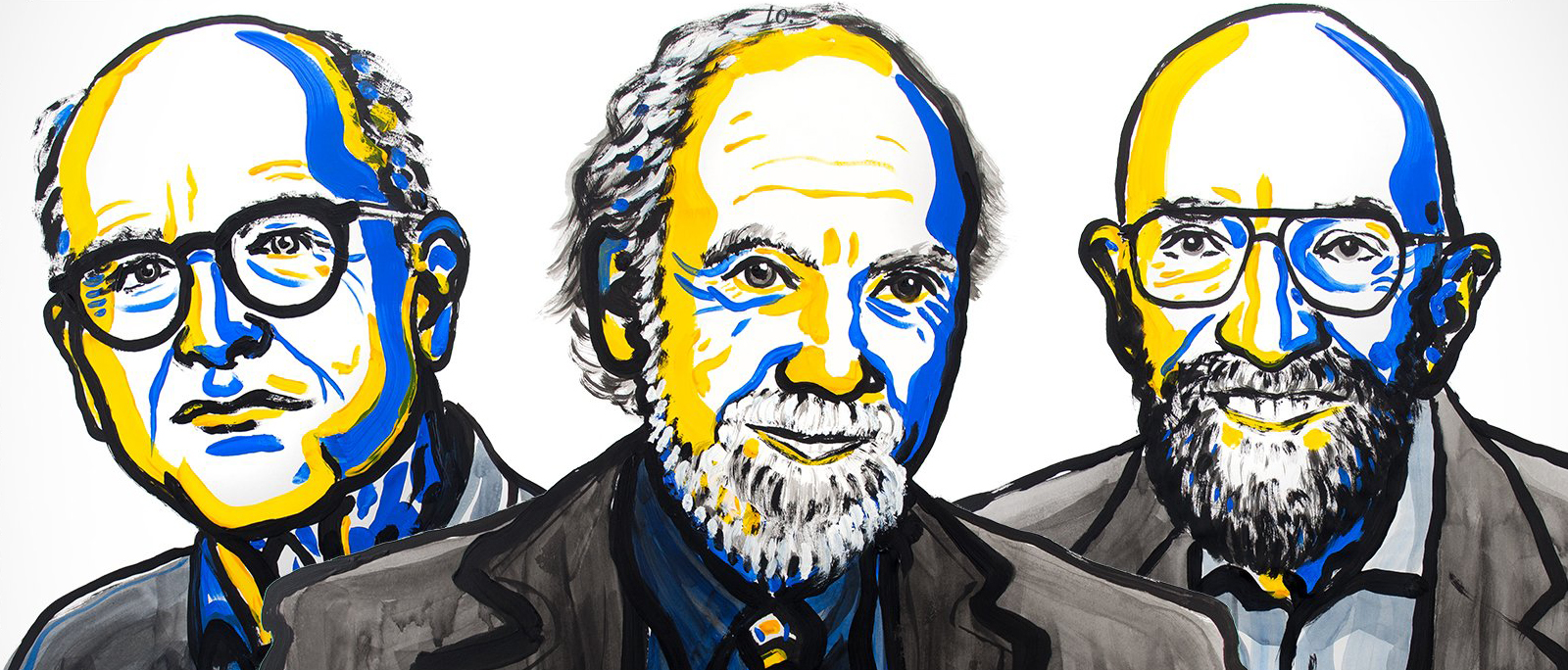LIGO collaboration wins 2017 Nobel in Physics
Nobel Prize in Physics goes to trio whose combined efforts helped create experiment that directly detected gravitational waves in 2015.
Take a self-guided tour from quantum to cosmos!
Nobel Prize in Physics goes to trio whose combined efforts helped create experiment that directly detected gravitational waves in 2015.

It was widely expected and warmly celebrated. Three physicists whose work led to the direct detection of gravitational waves will share the 2017 Nobel Prize in Physics.
Rainer Weiss, Barry C. Barish, and Kip S. Thorne were cited “for decisive contributions to the LIGO detector and the observation of gravitational waves.”
Weiss receives half of the prize, while Barish and Thorne share the other half. The award was announced by the Royal Swedish Academy of Sciences in Stockholm on October 3.
Perimeter Institute Deputy Faculty Chair Luis Lehner, who specializes in strong gravity research, described the Nobel as “wonderful news, and greatly deserved recognition.”
“Thanks to them – and, as they would be quick to point out, about 1,000 researchers and technicians – the gravitational-wave window to the universe has been opened. Major discoveries await thanks to this new lens on the universe,” Lehner said.
“What’s more, we will soon be able to detect both gravitational and electromagnetic waves, providing humankind with information about our universe from multiple cosmic messengers. We are all busily working to exploit this unprecedented opportunity and eagerly anticipating important breakthroughs.”
In the 1970s, Weiss designed a laser-based interferometer to detect gravitational waves, which had been predicted by Albert Einstein 60 years earlier. Weiss, now emeritus professor of physics at Massachusetts Institute of Technology, worked closely with Thorne, now the Feynman professor of theoretical physics at California Institute of Technology, whose theories made crucial predictions of what such an experiment should look for.
Along with Scottish physicist Ronald Drever, who died in March 2017, they launched the Laser Interferometer Gravitational-Wave Observatory. But by the mid-1990s, LIGO was in danger of being cancelled. That’s when Barish, a former particle physicist, stepped in to lead the project to completion.
In February 2016, LIGO announced the direct detection of a gravitational wave.
“Together, they have realised a vision that is almost 50 years old,” the Royal Swedish Academy of Sciences said in a statement accompanying the announcement. “The 2017 Nobel Laureates have, with their enthusiasm and determination, each been invaluable to the success of LIGO.”
Gravitational wave researchers gathered at Perimeter’s first in-person scientific workshop since the pandemic began.
Gabriela González will take the audience on a journey to some of the universe’s most violent places, and explain how such distant events can lead to a very bright future here on Earth.
She uses Einstein’s century-old masterwork to uncover fresh glimpses of the universe.